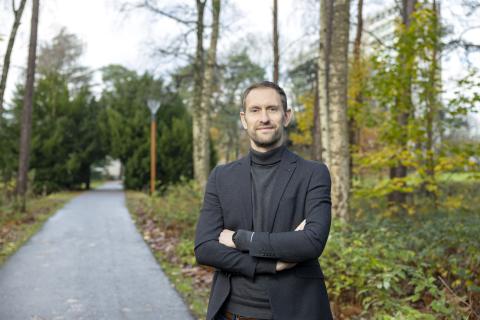The warehousification of the Dutch landscape: Tentative solutions
Everyone has an opinion on the big box distribution centers that have sprung up in many places in the Netherlands. But how many are there, how much space do they actually take up, and how does this relate to economic benefit and sustainability? Angela Acocella has conducted research, together with Frans Cruijssen and Jan Fransoo, into the arguments based on data relating to, among other things, inventory levels, markets served, and locations. The researchers make four recommendations.
There’s no avoiding it in the Netherlands: the rapid emergence of large distribution centers with trucks constantly going back and forth. Over the last decade, logistics real estate grew by about four million square meters per year. Much of this real estate consists of enormous XXL warehouses. The province of North Brabant is a popular location for logistics companies, also due to its central position in Western Europe.
There is a lot of discussion on the ‘warehousification’ of the landscape. Opponents feel distribution centers are ruining the landscape and the living environment. Proponents say they actually provide economic opportunities and jobs and make logistics more sustainable through shorter distances. The distribution centers themselves face the challenges of a growing number of orders, limited warehouse space, and unsupportive regulations.
With financial support by TKI Dinalog, a Top consortium for Knowledge and Innovation in Logistics, the researchers executed a research project on the ‘warehousification’ of the Netherlands and formulated practical recommendations for policymakers and politicians. For this study, they collected data from 81 large distribution centers.

How much value does the inventory create for the economy and society and is it worth the cost to store it?
Frans Cruijssen
‘Cluster all big warehouses into 20-25 logistics parks’
"We propose that the Dutch government explicitly designates a set of 20 tot 25 logistics parks. The companies in each park will be able to share facilities like parking lots, security, and accommodation for flexible labor. Specific regulations should be introduced with respect to this accommodation, or legislation, for instance, permitting higher storage space. The large roof space of the XXL warehouses is very suitable for solar panels. They can produce enough solar energy to power the entire fleet of box trucks and trailers in the Netherlands."
‘Do more with existing warehouse space through densification and collaborative storage’
"Our study shows that, even in warehouses at capacity, there is much empty space. Storage racks and packages could be placed closer together, creating narrower passageways between them, and using empty overhead space for storage. Companies could also collaborate more, for instance, by renting space in other warehouses in peak seasons."
‘Limit inventory growth by prioritizing industrial segments through pricing’
"To save space, it could be worthwhile to prioritize industries that contribute to the Netherlands’ strategic autonomy, segments that prevent over-reliance on global powers, for instance, healthcare, aerospace, and defense. We anticipate that logistics companies will be forced to think in terms of ‘added value per cubic meter’: how much value does the inventory create for the economy and society and is it worth the cost to store it?"

In order to make sound policy and to decide whether constructing new warehouses is really necessary, a thorough analysis should be made of the existing status of warehouse inventory
Jan Fransoo
‘Collect and utilize detailed warehouse-level data for informed policymaking’
"In order to make sound policy and to decide whether constructing new warehouses is really necessary, a thorough analysis should be made of the existing status of warehouse inventory. This includes information on inventory levels, intended markets, footprints, and location. To the best of our knowledge, our research is the first of its kind to make warehouse-level information available regarding how much inventory is actually inside big warehouses in the Netherlands, what the inventory is used for, and where it is going. This information offers many opportunities for logistics companies to work more efficiently."
About the study
The research report, ‘Warehousification’: scenarios for the future of big box warehouses in the Netherlands, can be accessed here.
The study was funded by TKI Dinalog and executed as part of Tilburg University’s Program for Broad Prosperity.
Also in Tilburg University Magazine
Learn more:
Tilburg University strives to contribute to broad prosperity: a green, social and prosperous future for all. Check out our topic dossiers for new insights into labor market and talent development, healthcare and wellbeing, climate and energy and the digital society.
Date of publication: 5 February 2024



